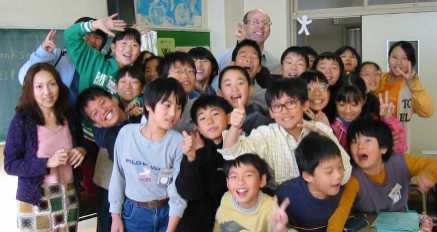|
|

|

|
Fifth Graders
|
|
|
The visit to Meirin Elementary School in Nagoya
was the only one of 13 visits with no connection to the Friendship Dolls. The
English classes for the fifth and sixth grades at the school are taught by
Ms. Yuka Onoda, who was one of my interpreters when I first went to Japan in
1986 on a business trip with no knowledge of the Japanese language.
I visited three English classes, one for the
fifth grade and two for the sixth grade. Since it was Thanksgiving Day in
America, I talked some about the history of the holiday and what Americans
typically do on Thanksgiving.
Although these were English classes, I found
out quickly that the amount of English I could use was quite limited. Almost
all of the Japanese elementary schools I visited had some introduction to
English, but the number of hours is very few. For example, at Meirin
Elementary School the students received only one class period of English
instruction every two weeks. The students, especially those who study English
in private lessons, knew many individual words, but almost all students had
great difficulty putting together full sentences and engaging in a
conversation.
Since I had brought an alphabet puzzle as a
gift for Ms. Onoda's preschool boy and since these were English classes, I
decided to try to see how many English words the students knew. On each
letter of the puzzle there was something that began with that letter. The
students figured out all of the words except for the following ones:
- G - Globe
- J - Jelly Beans
- L - Ladder
- Q - Quail
- X - Xylophone
They, of course, knew these words in Japanese,
and many of the students seemed to remember that they had heard the above
English words once I said them.
|